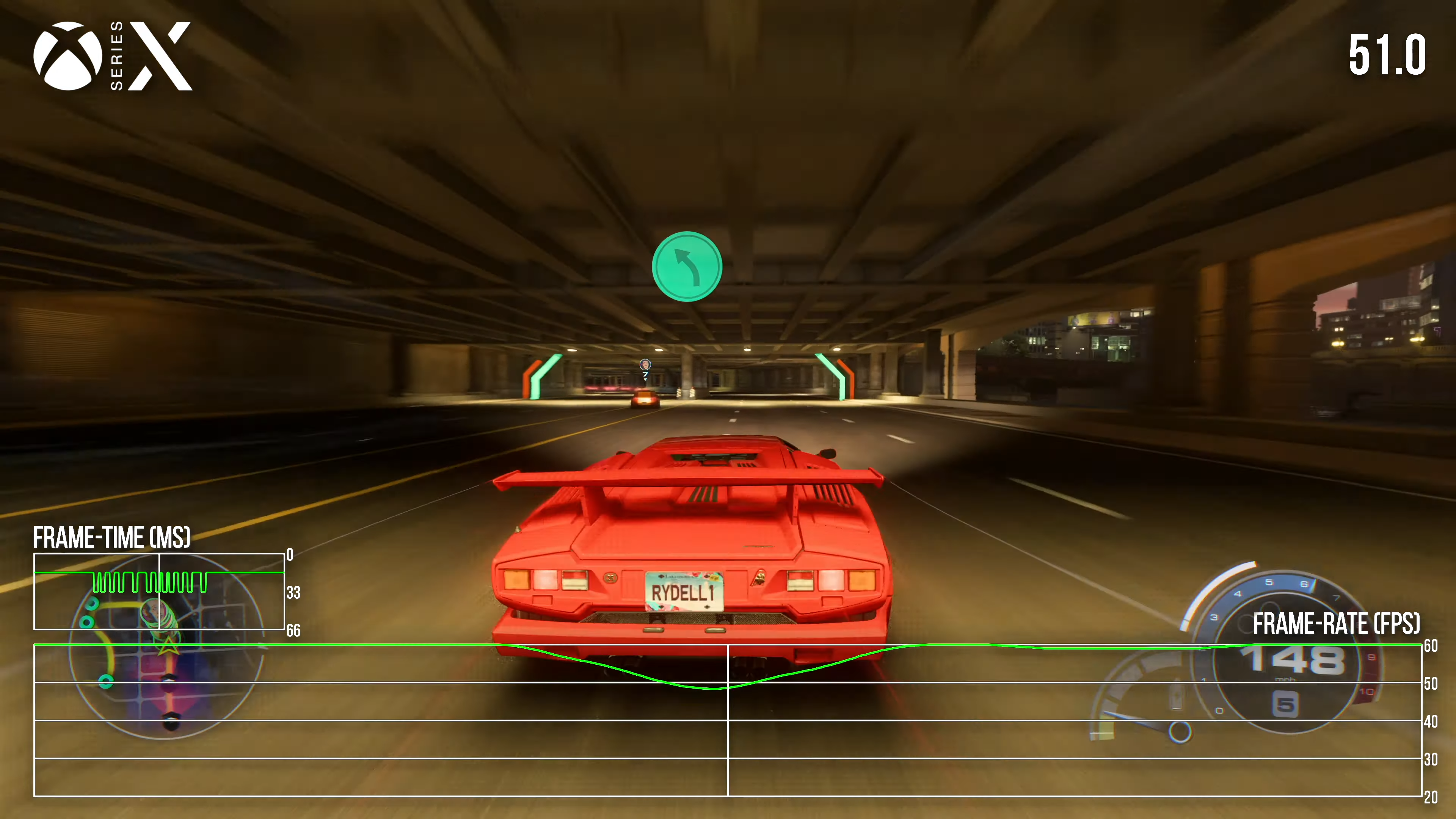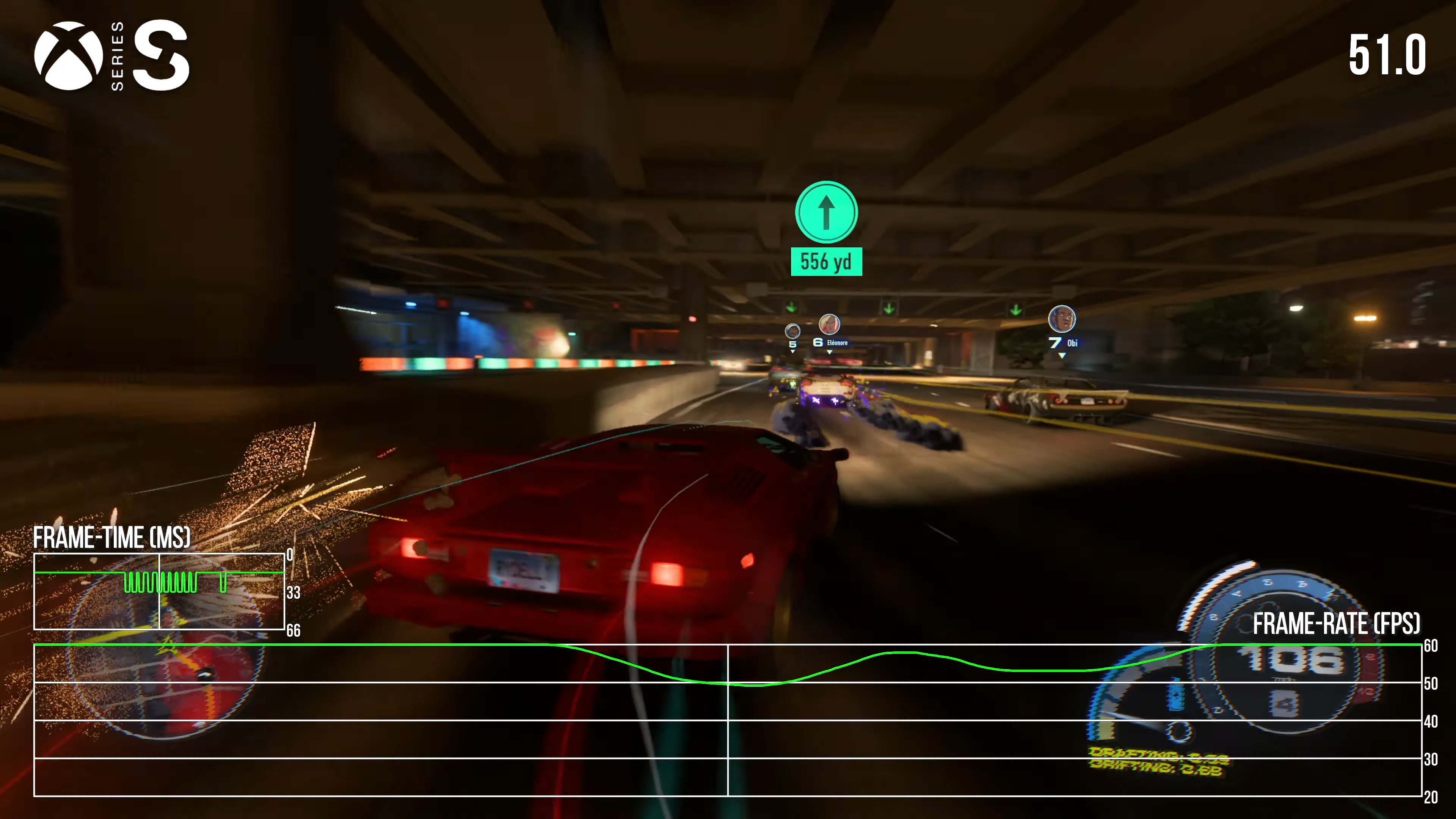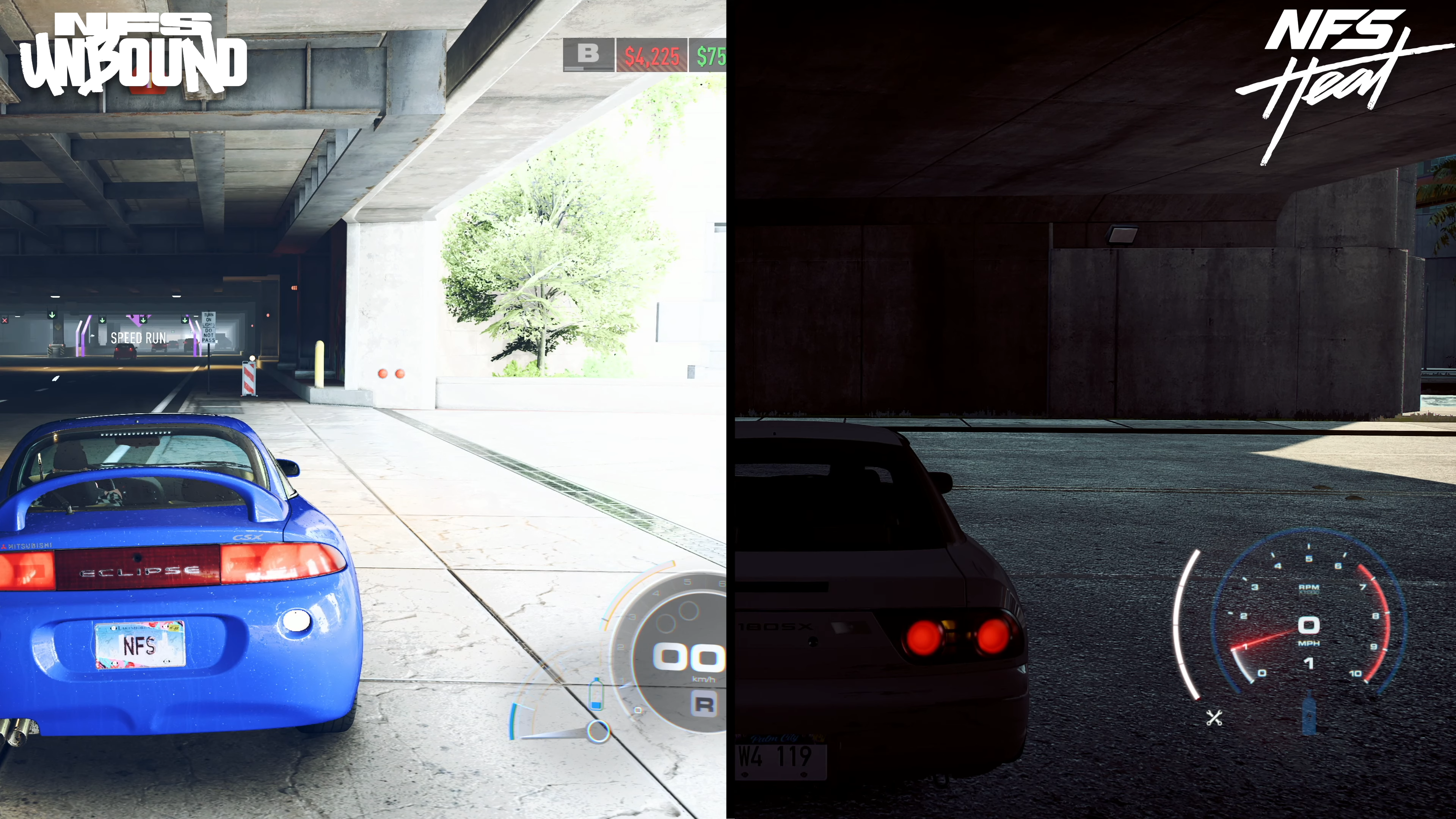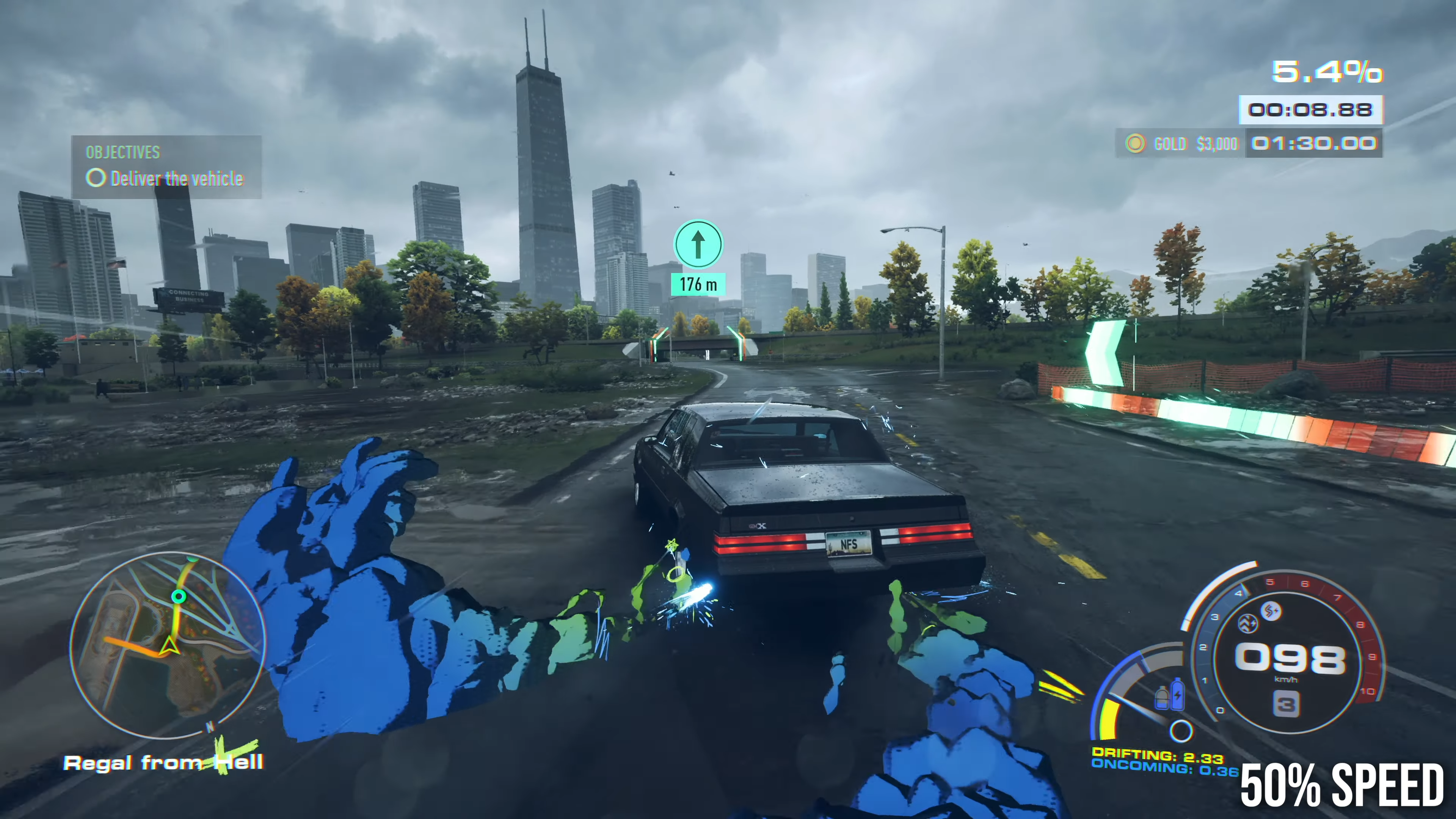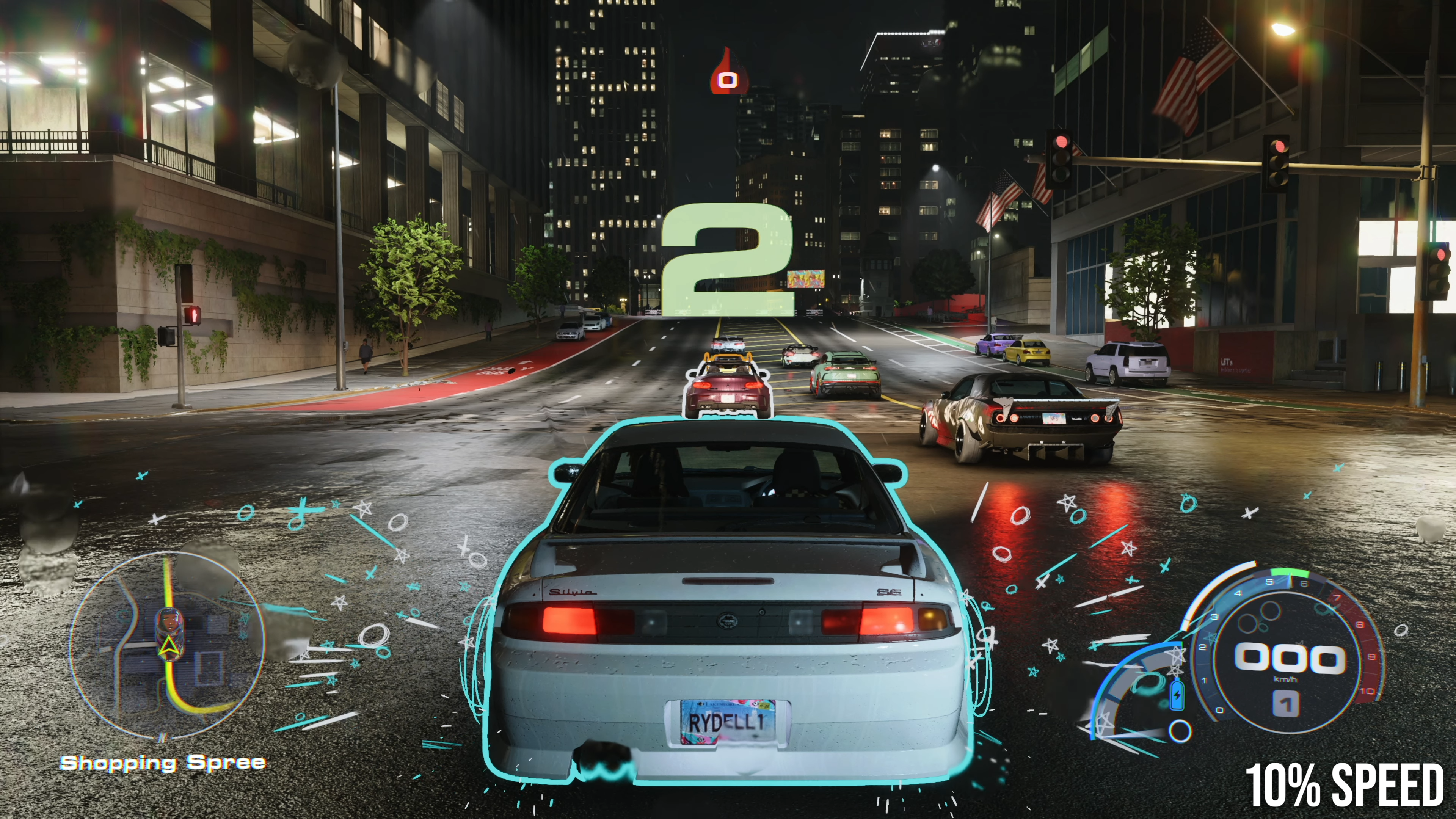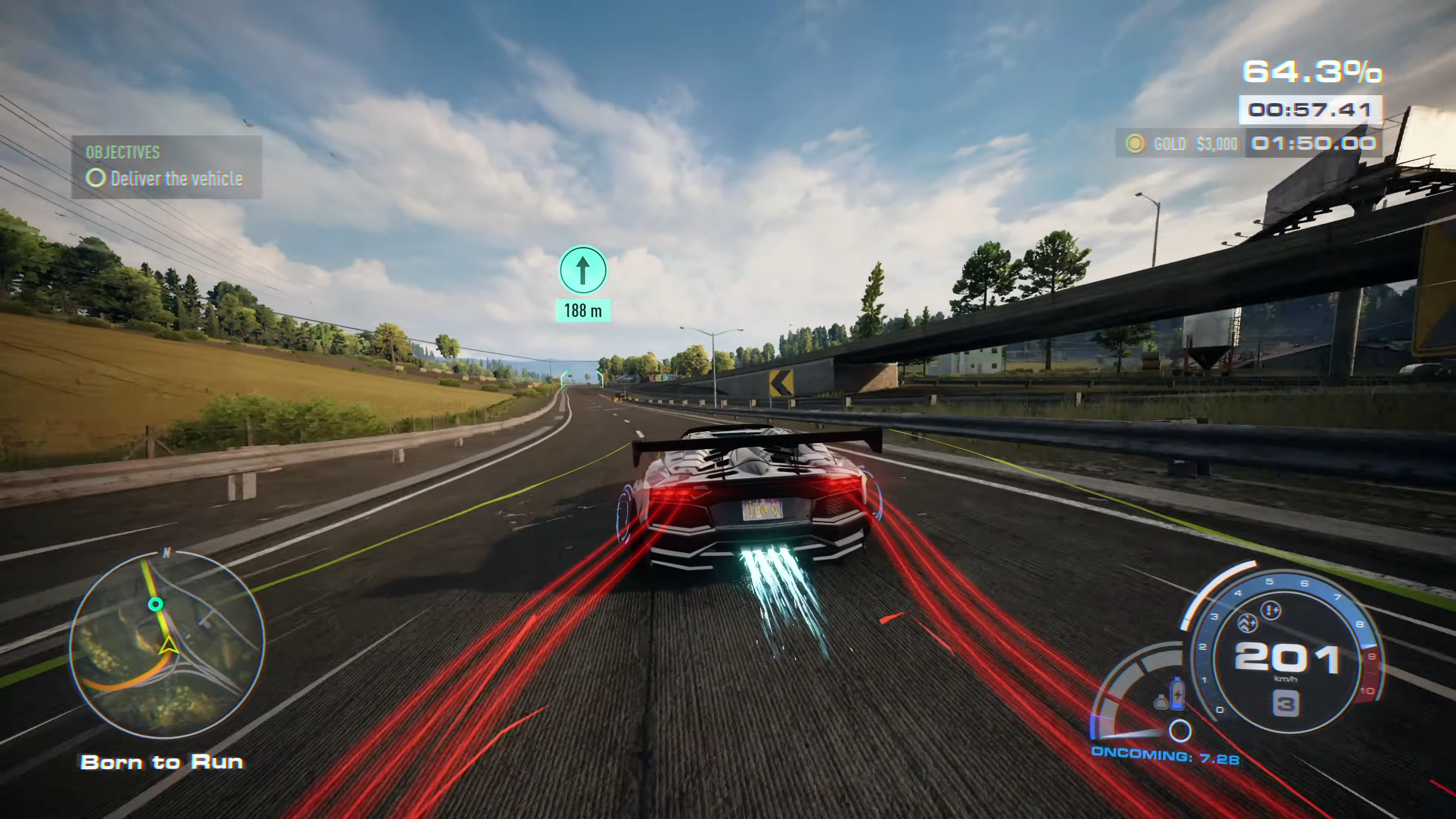Let’s get the basics out of the way first - resolution and performance. Series X and PS5 both target 4K while Series S opts for 1440p, but dynamic resolution scaling (DRS) attempts to keep a locked 60fps by dropping internal resolution in heavier moments. I counted as low as 1800p on PS5 and 2016p on Series X, but in general play PS5 is around 1944p and Series X is at full 4K (2160p). Meanwhile, Series S can be as low as 1080p, averaging 1296p, so you get a noticeably softer image than the 4K-like results on the premium consoles.
In terms of performance, the situation reverses. PS5 is more-or-less locked to 60fps, but Series X and Series S see one-off frame-rates drops fairly commonly and more occasional drops to 51-57fps during intense races. Given the higher average resolution on Series X, it’s possible that the DRS could be tweaked to ease GPU load and iron out these heavier drops - and if there are other underlying issues they ought to be solved. Right now though, PS5 offers the best overall experience for NFS Unbound.
No matter which console you’re playing on though, you won’t fail to spot the game’s new stylistic flourishes. Car exhaust plumes and tyre smoke have been replaced with colourful, stark particle effects, and all sorts of actions - like hitting a boost or nailing a jump - spawn bright sketched highlights.
Some effects are more static, 2D art sketched over your car, like angel wings appearing during a jump, while others are keyframed effects like tire smoke that have a smoother appearance and often mimic the look of cel-shading. I was worried these effects might be overwhelming, but they’re used somewhat sparingly to highlight key gameplay elements like drifting or colliding with another vehicle - and they add a lot of impact or excitement to a game that might otherwise look quite similar to other racing franchises.
The other visual novelty is the use of cel-shading for character models, with a few different levels of shading silhouetted with a strong highlight, providing a 3D appearance relative to other cel-shaded games. I like the way these characters look, even if their appearance is sometimes awkward when juxtaposed against the more realistic environmental artwork. These characters take centre stage during the game’s many cutscene sequences, which establish Unbound as more of a story-focused racing game than Hot Pursuit and Unwanted.
Whether you like the visual identity and plot-heavy nature of the game is a matter of taste, but Criterion has at least ensured that the game’s base visuals are produced to a high standard using DICE’s Frostbite engine - despite lacking any truly next-gen features. The conventionally-shaded car models and environments are detailed, and lighting quality is strong across the open world with global illumination that works well even in challenging scenarios like tunnels and overpasses.
Compared with Need for Speed Heat, the improvements are profound. Heat struggled to produce convincing results in indirectly-lit conditions and often looked flat. Unbound produces a subtle, rich result by comparison, with good bounce and brightness levels. This was probably the weakest element of recent Need for Speed titles and it’s great to see Criterion make big strides.
Additionally, there are other subtle lighting details that impress, like accurate-looking shading on foliage and car headlights that cast two shadows against the environment, which converge and diverge realistically. Environmental assets look good too, with high resolution models and convincing trees and natural ground detail - not quite Forza Horizon 5, but consistently of a high quality. The game looks great in motion too, thanks to well-tuned motion blur and unobtrusive pop-in.
The only minor complaint I have comes down to how reflections are handled, which use a mixture of cubemaps and screen-space reflections (SSR). SSR is only used for the most glossy surfaces (eg standing water), leaving rainslick streets and car hoods with cube maps instead. This means disocculusion artefacting is rare, but reflections don’t look quite as flattering as they could do with SSR.
Other quibbles include NOS boosts disabling motion blur in a slightly distracting way, the overuse of screenspace light shafts, and smaller objects that simply pop out of existence when hit, rather than deforming or being replaced by multiple broken pieces.
Overall though, Unbound looks impressive, especially in indirectly-lit conditions, and I like the stylistic flourishes during gameplay. However, they may not be everyone’s cup of tea - and that extends to the handling model too, which diverges from Criterion’s early work to a style more similar to recent NFS titles.
Cars drift effortlessly with a tap of the accelerator or brake while turning, but drifting often comes with a significant reduction in speed and potentially a loss of control too. My impression is that handling feels more satisfying as you progress into faster vehicles, where car upgrades unlock tools to adjust between drift and grip styles, but this progression can be quite slow.
After completing the prologue, you’re left in a weak B-class vehicle, earning money for new cars and upgrades through street races as usual, but relatively low payouts (and high entry fees on more rewarding races) mean that even minor upgrades take a long time to achieve. The early game feels a bit grindy as a result, and the long straightaways featured in many race routes mean that there sometimes aren’t the means to drive beyond your car’s capabilities or make up for an early blunder.
Still, while some elements of the game’s presentation may not appeal to everyone, I do think Unbound is an excellent arcade racer - Criterion has made a solid return to the genre that made them famous, with a NFS game that’s well worth playing. Outside of the occasional performance issues on Xbox consoles, I’m pleased with Unbound’s graphical turnout as well. This isn’t a boundary-pushing game necessarily, but it presents a convincing, well-lit open world with some bold artistic touches.

